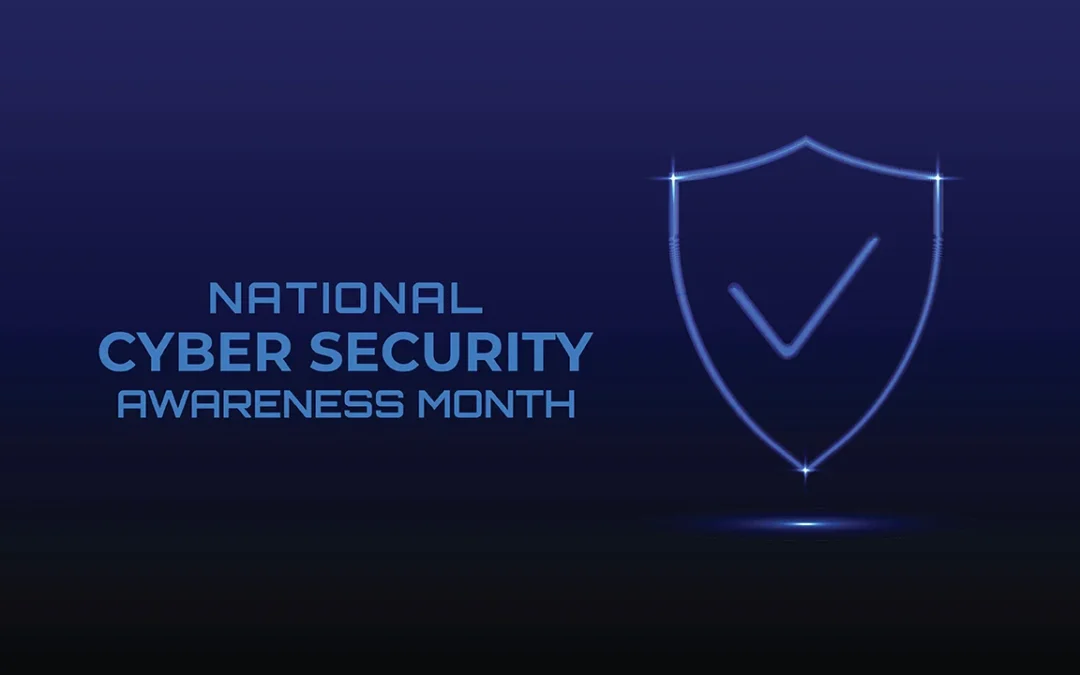October is Cybersecurity Awareness Month, and this year’s theme—Building a Cyber Strong America—hits especially close to home for those of us in physical security and cabling infrastructure. Here’s the part that often gets overlooked: you can’t build a cyber strong America without strong physical security. Every server room, access point, cable run, badge reader, or camera is a potential entryway into your digital world. If a door is propped open, a cable closet left unlocked, or a video surveillance feed unsecured, the result can be just as damaging as a line of malicious code. In today’s interconnected environment, physical security is cybersecurity.
A Quick Story
A large healthcare provider reached out after a troubling incident. Someone had gained unauthorized access to a restricted area, not through digital hacking, but simply because an unsecured door and lack of audit control allowed it. While no data breach occurred, the potential was real: medical supplies, records, or equipment could’ve been compromised.
That incident underscored why physical and cyber protections can’t be treated separately. A lock on a door, a camera feed, or a properly secured cabling closet can mean the difference between safety and a breach.
Where Physical Security Meets Cyber Risk
Many organizations focus heavily on firewalls, threat detection, and user training—rightfully so. But there are often-overlooked physical security dimensions that amplify risk if left unchecked:
- Access Control Hardware – Badge readers, turnstiles, and doors can be weak points if not properly managed.
- Video Surveillance – Cameras are only as strong as the security of their feeds and storage.
- Structured Cabling – Poorly managed or outdated cabling can lead to outages, vulnerabilities, or unintended access.
- Door Hardware – Locksets, hanging devices, exit devices, cylinders/key closers, hold opens and protection plates all require maintenance and upgrades.
When physical infrastructure is neglected, cyber resilience suffers. Building a cyber strong America means addressing both.
Five Tips to Boost Employee and Infrastructure Security
Here are five practical steps enterprises can take today to reduce risk:
| Tip | Why It Matters | What You Can Do |
| 1. Conduct a Physical Security Audit | You can’t protect what you don’t assess. | Walk facilities, test access points, review cabling closets, and identify vulnerabilities. |
| 2. Enforce & Monitor Access Control Policies | Access must be controlled and tracked. | Use role-based access, regularly deactivate old credentials, and monitor logs for anomalies. |
| 3. Secure Video Surveillance Data | Video is evidence—don’t let it be tampered with. | Encrypt feeds, secure storage, restrict access, and test usability. |
| 4. Maintain Your Cabling Infrastructure | Cables are the backbone of all digital systems. | Label, lock, and inspect cables regularly; upgrade when necessary. |
| 5. Empower Employees with Awareness | People can be the weakest link—or the strongest defense. | Train staff on tailgating, piggybacking, suspicious behavior, and reporting channels. |
How Data Link Supports These Strategies
Here’s how we support companies, healthcare facilities and schools in building a cyber strong infrastructure:
- Access Control Systems – Scalable badge readers, biometrics, and electronic locks, centrally managed for consistency.
- Video Surveillance – Intelligent cameras, encrypted storage, and secure access controls.
- Structured Cabling – Standards-based, secure copper and fiber optic cabling systems that support reliable performance and limit vulnerabilities.
- Door Hardware – From mechanical locks to advanced electronic systems, all installed and maintained to spec.
- Multi-Location Rollouts – Seamless project management ensures every site gets the same level of protection and centralized control.
Each service is designed to eliminate weak links and strengthen the entire security chain.
Rising Risks on Our Radar
Here are three trends we think every business should monitor:
- Smart Devices as Entry Points – Common devices like cameras and readers now carry network risks.
- Convergence of Physical & Cyber Security – Hardware isn’t separate from cybersecurity—it is cybersecurity.
- Distributed Sites – Multi-site consistency is essential; one weak facility can compromise the whole network.
Your October Action Plan
- Snapshot Your Current State – Assess physical and cyber security across doors, cameras, and cabling.
- Set Quick Wins & Long-Term Goals – Start with fixes like replacing door hardware and surveillance cameras, then move to system-wide upgrades.
- Engage Your Team – Create a culture of vigilance, not just compliance.
Building a Cyber Strong America, Together
Cybersecurity Awareness Month reminds us that resilience isn’t built in isolation. Much of our nation’s infrastructure is privately owned and operated, which means every organization contributes to national security. By combining strong cyber practices with strong physical infrastructure, we collectively build a safer country.
At Data Link, we’re proud to play our part. Whether it’s designing cabling backbones, installing secure access systems, or maintaining video surveillance networks, our role is clear: helping enterprises strengthen the foundations that protect their people and their data.
If you’d like a security audit, a hardware upgrade, or just want a conversation about your current security system, reach out. Let’s make sure that when threats come, your business and people are secure.
Here’s to a safer, more secure future, this month and all year long.

